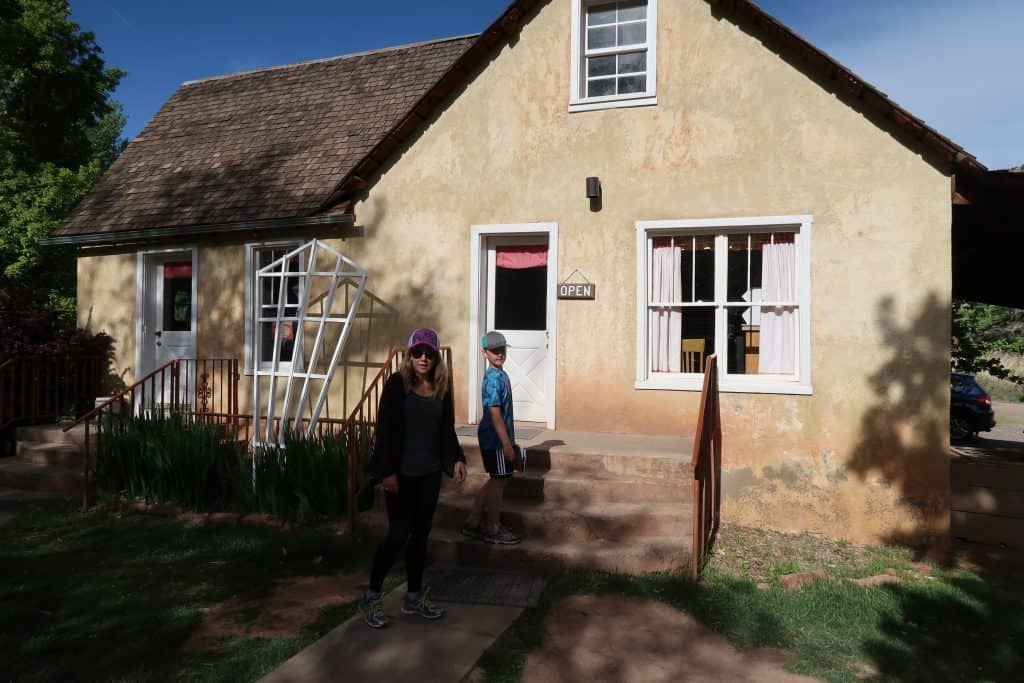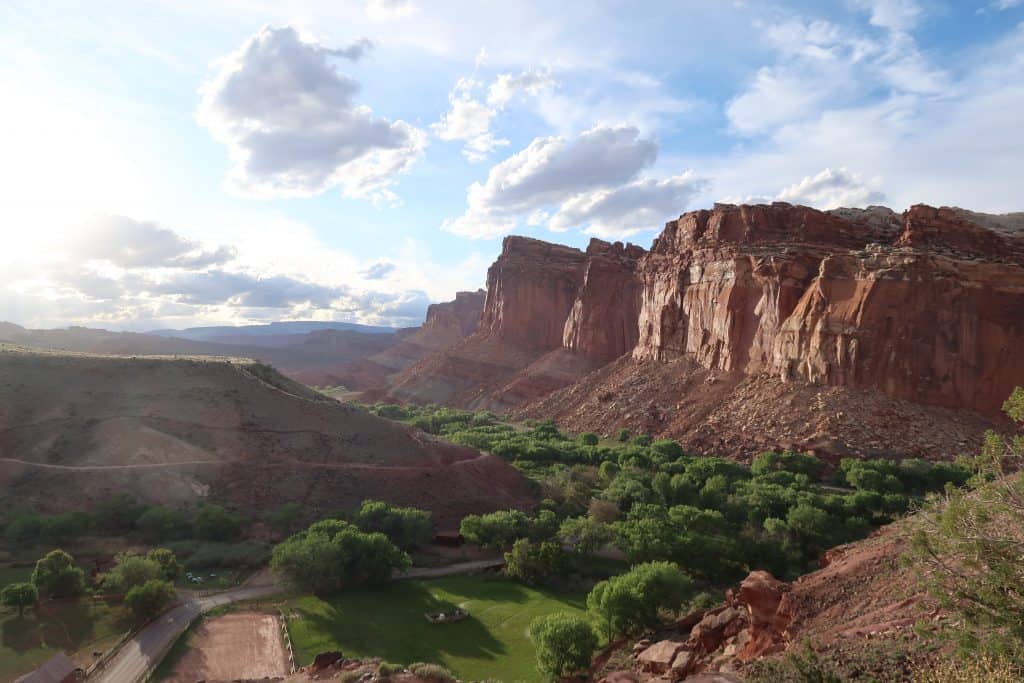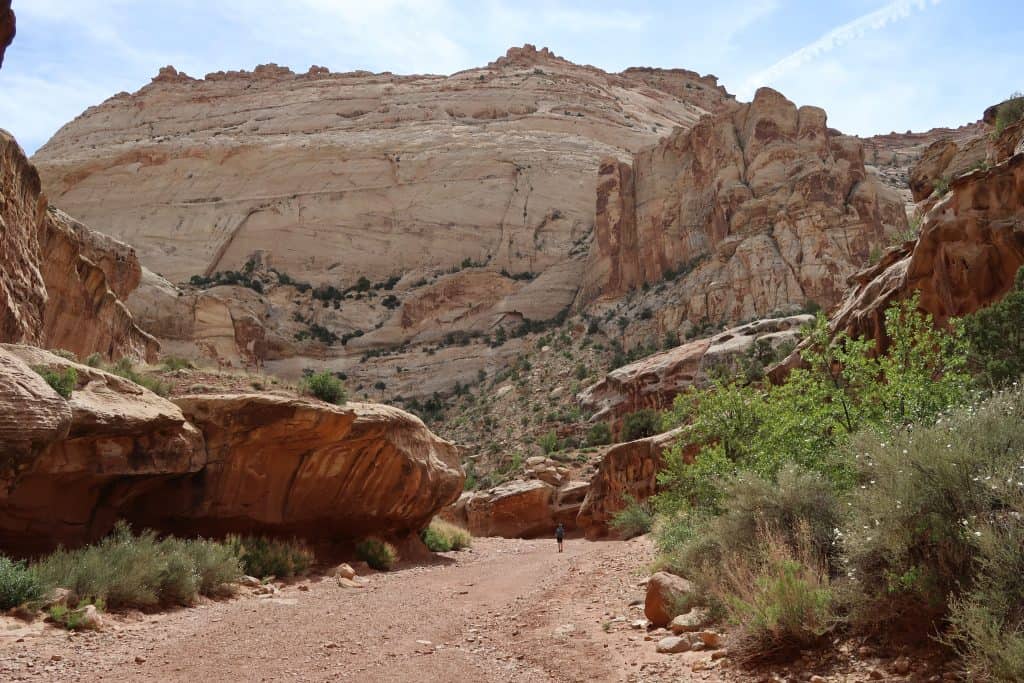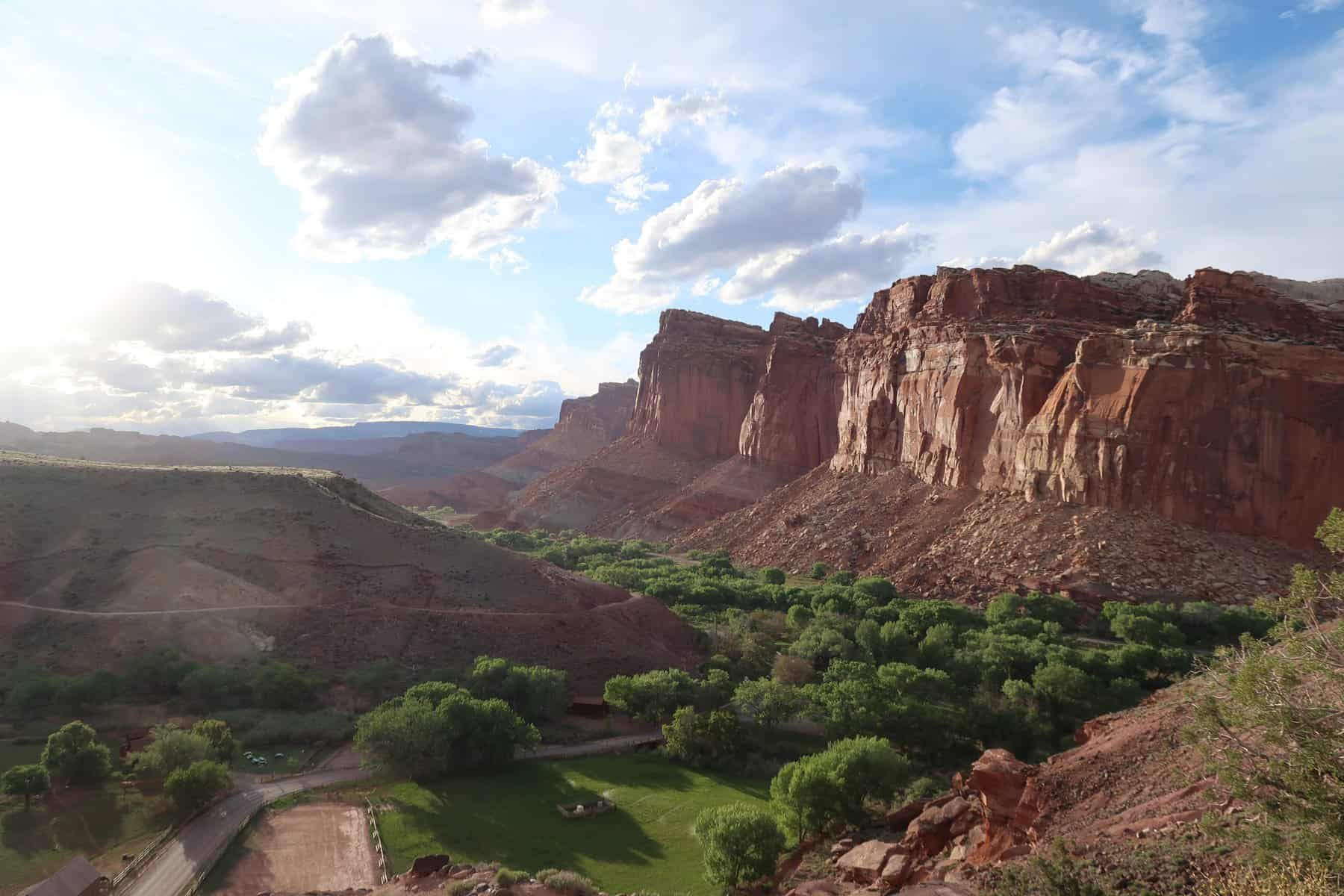Capitol Reef National Park, located in Utah, is known for its stunning red rock formations and unique landscapes. But beyond its natural beauty, the park also has a rich human and geological history. In this post, we will explore the fascinating history of Capitol Reef National Park, from the ancient inhabitants to the geological forces that shaped the landscape.
Human History of Capitol Reef:
Fremont People:
The Fremont people inhabited the Capitol Reef area dating back to around 300-1300 AD/CE. They were a pre-Columbian Native American culture that flourished in what is now the western United States. They primarily lived in the Great Basin and the Colorado Plateau regions.
The Fremonts were skilled farmers, hunters, and gatherers. We also know them for their distinctive rock art and pottery.
The Fremont people were also among the first to practice irrigation agriculture in the region, and their irrigation canals and structures are still visible today. Despite their many achievements, the Fremont people eventually disappeared. While we are not clear what happened to them, suspects include climate change, drought, or conflicts with other groups.
The legacy of the Fremont culture lives on. Visitors to Capitol Reef can see the remains of Fremont villages and petroglyphs throughout the park.
Mormon Settlement:
In the 1800s, Mormon pioneers settled in the area, attracted by the fertile land and water sources. These Mormons were the first non-indigenous settlers to arrive in Fruita, Utah.
They successfully established a farming community, planting orchards of fruit trees that gave the town its name. Fruita quickly became a popular stopover for travelers and miners. It even had its own post office, school, and church.
Today, Fruita is home to a small museum, several hiking trails, and a thriving fruit-picking industry. Visitors can still see the historic orchards and buildings from the Mormon settlement.

Uranium Mining:
In the mid-1900s, uranium was discovered in the area, and mining operations began in Capitol Reef. However, the mining was short-lived and was eventually shut down due to safety concerns and the low demand for uranium.
Geological History:
Formation of the Waterpocket Fold:
The Waterpocket Fold is a massive geologic feature that runs through Capitol Reef National Park. It is a 100-mile long wrinkle in the earth’s crust that was formed over millions of years as a result of tectonic forces. The Fold created the park’s unique landscapes, including towering cliffs, narrow canyons, and colorful rock formations.

Sedimentary Rock Formations:
Capitol Reef is also known for its stunning sedimentary rock formations, including the famous Capitol Dome. These formations were created over millions of years as layers of sediment were deposited and compressed, eventually forming the colorful rock formations seen in the park today.
Geologic Time Scale:
Capitol Reef National Park offers a unique opportunity to view the geologic time scale, with rock formations dating back over 270 million years. Visitors can see evidence of ancient oceans, extinct animals, and geological forces that shaped the landscape over millions of years.
Tips for Exploring Capitol Reef National Park:
See the Petroglyphs
Explore the petroyglyph panels left by the Fremont people. These can be seen by walking a boardwalk from Utah State Route 24. Bring some binoculars and allow the kids to enjoy interpreting the images through their modern lenses!
Attend a Ranger Program
Throughout the summer and early fall, rangers keep a busy schedule of programming. They include educational talks on the geology, history, and astronomy of the region.
Take a Hike
Capitol Reef national park has numerous family-friendly hiking trails. Many offer fun features like “secret hide-outs,” seasonal wild flowers, and fun climbs.
The Grand Wash Trail is named by many publications as one of the best hiking trails in the country. When we went, in May, it also offered the broadest, most vibrant display of wildflowers that we have ever seen on a hike! It is family-friendly and around five miles round-trip.
For a perfect evening, be sure to enjoy the Sunset Point Trail. This 0.8 mile out and back trail offers breathtaking views of the western sky, and it is easy and enjoyable for the entire family.

Visit the Orchards
Capitol Reef has numerous fruit tree orchards, and, if you arrive during fruiting season, you can pick your own fruit! You are asked to pay for your harvest at self-pay stations.
Fruiting season runs from June through October and includes apricots, peaches, pears, and apples respectively. Visit the Park site for more details.
Explore the Historic Structures
In the heart of Capitol Reef National Park lies the Gifford Homestead. The Gifford house, now commonly know as the “pie place,” is run by the Natural History Association.
Visit the Pendleton Barn, built in 1908 by early settlers to the area. Visit the restored Fruita Schoolhouse which functioned from 1896 until 1941 when it was discontinued due to lack of students.
Camp!
We strongly suggest that you and the family consider camping at the Fruita Campground for at least one night. The sites are huge and shaded. The sounds of the leaves further elevate this relaxing experience. And, the best part for kids (and some adults,) is that when you wake up in the morning, you can take the short trail over to the Gifford House to buy fresh, morning pastries!
Fruita Campground does require reservations from March through October. You can make reservations HERE.
This region is prone to flash floods, and its high elevation does mean that winter can come early or last long. Ensure that you check the weather before driving to this remote, high desert park. With a little preparation Capitol Reef is sure to make your “favorites” list!
Capitol Reef National Park offers a fascinating glimpse into both human and geological history. From the ancient Fremont people to the geological forces that shaped the landscape, the park is a unique destination for anyone interested in history and outdoor exploration. With fun hikes, fruit harvests, and historic displays, visitors can fully appreciate the rich history and natural beauty of this stunning park.

